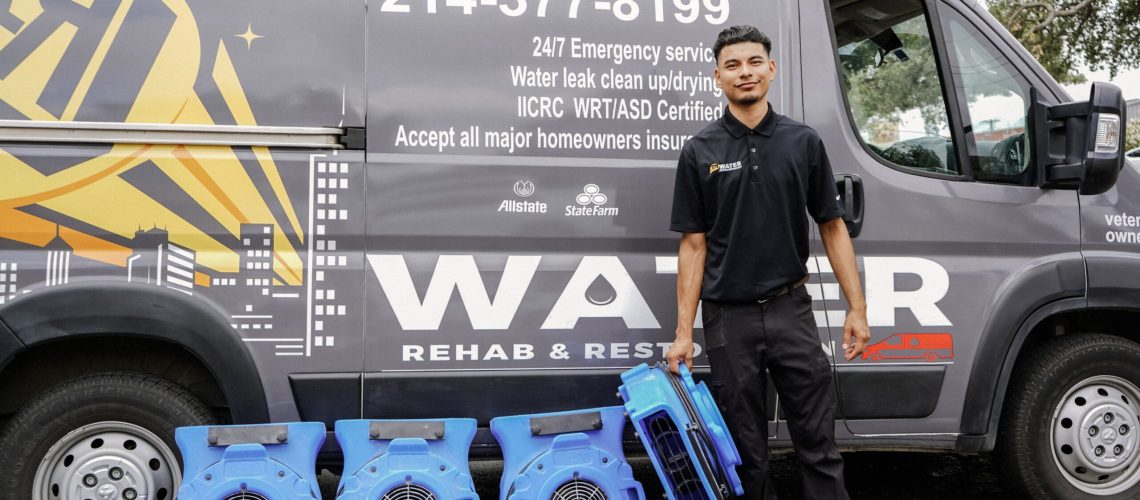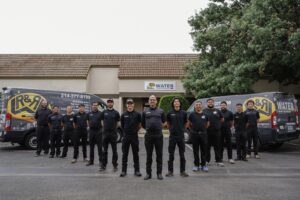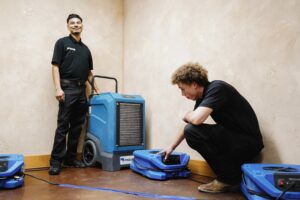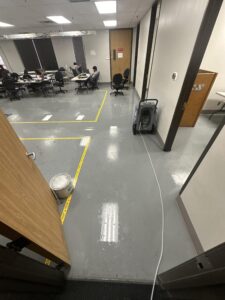Key Takeaways
- Not all water damage is the same—it varies in contamination levels and severity.
- There are three categories of water damage:
- Category 1 (Clean Water): Comes from sanitary sources like broken water lines.
- Category 2 (Gray Water): Contains some contaminants, like washing machine overflows.
- Category 3 (Black Water): Highly contaminated, such as sewage backups or floodwater.
- Water damage is also classified into four classes based on how much it has spread and how difficult it is to dry:
- Class 1: Minimal absorption, affecting only a small area.
- Class 2: Significant absorption into materials like carpets and drywall.
- Class 3: Extensive saturation, affecting walls, ceilings, and floors.
- Class 4: Specialty drying situations involving materials like hardwood and concrete.
- Acting quickly is crucial—mold can start growing within 24 to 48 hours.
- Professional water damage restoration services ensure proper drying, cleaning, and repairs.
Water damage is water damage, right? Well, not exactly. At Water Rehab & Restoration, we’ve seen it all—from minor leaks to catastrophic floods—and we can tell you firsthand that not all water damage is created equal.
Understanding the different types of water damage can help you act quickly and make the best decisions for your home or business. That’s why we’re breaking it all down into easy-to-understand categories and classifications. By the end of this blog, you will know why some water damage situations are riskier than others and why fast action is always key.
The Three Categories of Water Damage
Water damage is classified into three main categories based on the source of the water and its level of contamination. Let’s break them down:
Category 1: Clean Water
This is the least harmful type of water damage. It comes from a clean and sanitary source, such as:
- Broken water supply lines
- Overflowing sinks or bathtubs (without contaminants)
- Appliance malfunctions (like a fridge or water heater leak)
Since Category 1 water doesn’t contain harmful bacteria or pathogens, it’s not an immediate health threat. However, if left untreated, it can quickly escalate. Clean water can become contaminated within 24 to 48 hours, turning into Category 2 (or worse).
Category 2: Gray Water
Gray water is a bit more serious. It contains some level of contamination that could cause illness if ingested or exposed to over time. Common sources of gray water include:
- Washing machine or dishwasher overflows
- Toilet overflows (without feces)
- Sump pump failures
Gray water has microorganisms that can multiply rapidly if not dealt with quickly. If left untreated for too long, it can degrade into Category 3 water, which is a whole different ballgame.
Category 3: Black Water
This is the worst type of water damage. Black water is highly contaminated and poses severe health risks. It may contain bacteria, viruses, chemicals, and other toxic materials. Examples include:
- Sewage backups
- Floodwaters from rivers, lakes, or storms
- Standing water with mold growth
Black water requires professional handling. If your home or business is affected, don’t try to clean it yourself—call in the experts (like us at Water Rehab & Restoration) to handle it safely and properly.
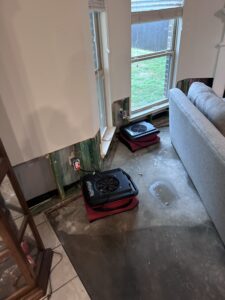 The Four Classes of Water Damage
The Four Classes of Water Damage
Beyond categories, water damage is also classified by the extent of damage and how much water has affected the structure. This helps determine the restoration process needed. Here’s what you need to know:
Class 1: Minimal Damage
Class 1 is the least severe type of water damage. It affects only a small area with minimal absorption, meaning materials like carpet and drywall haven’t soaked up much water. Typically, this is a quick and relatively easy fix.
Class 2: Significant Absorption
Class 2 water damage is more serious. The water has spread further, soaking into carpets, furniture, and walls. While still manageable, it requires professional drying techniques to prevent secondary damage like mold growth.
Class 3: Extensive Damage
Class 3 means water has saturated nearly everything in the affected area, including walls, ceilings, insulation, and flooring. This often happens in cases of broken pipes, roof leaks, or major floods. Class 3 water damage requires intensive drying, dehumidification, and often structural repairs.
Class 4: Specialty Drying Situations
This is the most difficult class of water damage to remediate. It involves materials that absorb water slowly or hold onto moisture for long periods, such as:
- Hardwood floors
- Concrete
- Plaster walls
Specialty drying techniques and equipment are needed to extract moisture properly and prevent long-term structural damage.
Why It’s Important to Act Fast
No matter the category or class of water damage, one thing is always true—time is not on your side. The longer water sits, the more damage it causes. Mold can start growing within 24 to 48 hours, and structural materials weaken the longer they’re exposed to moisture.
At Water Rehab & Restoration, we use state-of-the-art equipment to assess and dry out affected areas quickly. Our team understands that every minute counts, and we work fast to minimize damage and restore your property as efficiently as possible.
How We Handle Water Damage Restoration
When you call us for water damage restoration, here’s what you can expect:
- Inspection & Assessment: We identify the category and class of water damage and create a customized restoration plan.
- Water Removal: We use powerful pumps and vacuums to extract standing water quickly.
- Drying & Dehumidification: Industrial-grade fans and dehumidifiers remove excess moisture from affected materials.
- Cleaning & Sanitizing: If necessary, we clean, disinfect, and deodorize the area to prevent bacteria and mold growth.
- Restoration & Repairs: If structural damage has occurred, we repair walls, flooring, and other affected materials to restore your property to its pre-damage condition.
Final Thoughts
All water damage is not the same, and understanding the different categories and classes helps you know what you’re dealing with. Whether it’s a minor leak or a full-scale flood, taking quick action is crucial.
At Water Rehab & Restoration, we are here to help. If you ever find yourself dealing with water damage, don’t wait—give us a call, and let our experienced team handle the situation the right way. The sooner we start, the less damage (and cost) you’ll have to deal with in the long run.
Need help now? Contact us today, and let’s get your property back to normal as soon as possible!

